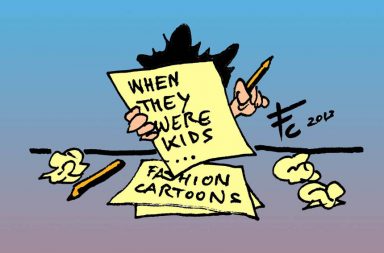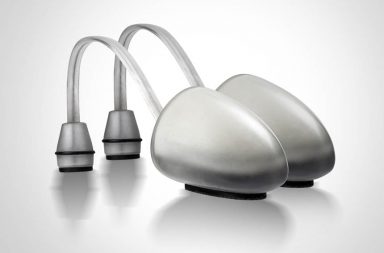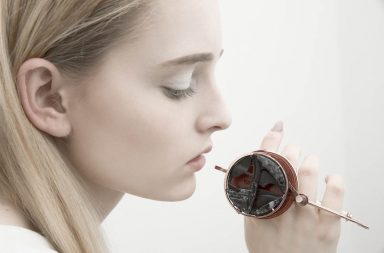So Catchy! Where Fashion Begins had the pleasure recently to interview the winner of the Samsung EGO Innovation Project 2015. Rubén Gómez was chosen amongst many competitors to present his technologically innovative collection on February 11 at Mercedes-Benz Fashion Week in Madrid.

‘Masdar Coats’, inspired by dreams of a smart city, is made up of seven pieces that perfectly integrate technology, fashion and an urban lifestyle. Rubén used mesh, Goretex and resin-coated nylon to create two distinct lines, ‘netcoats’ and ‘garmtents’, which include sepakers and microphones to listen to music or use your phone hands free. Some of his creations light up and others turn into literal tents.
We can’t wait to see his work on the catwalk and, even more so, to see them made a reality. We hope it’s soon but in the meantime, we’ll have to settle for the interview that he gave us before his debut:

So Catchy!: Rubén, before we get started, I just wanted to say congratulations on the Samsung Ego prize. Here at So Catchy!, we’re always looking anything innovative in fashion and we were wondering where you got the idea for a project that unites fashion and technology?
Rubén Gómez: It’s been awhile now that I’ve been thinking about participating in the Samsung Ego Innovation Project (SEIP), but I needed a good idea that went further than fashion, something linked to the times we’re living in, and to design. I wanted to offer something more.
It all started when I was reading a book by Hugh Hefner, the founder of Playboy Magazine. He had worked for years from one room with a small bed surrounded by monitors showing his offices, TV, or anywhere else that he happened to have a camera; he did it all from there. I thought it was sort of like how the Hikikomori live. At the time I was also thinking about social movements like Occupy and in architecture from the 70s, like Archigram, which tried to find the smallest habitable unit. And then I brought it all together with Masdar, the smart city from Norman Foster.

SC!: What do you think innovation in fashion is?
RG: Innovation in any field should bring solutions, reflections and new ways of thinking to users or society in general. It should go further than just aesthetics and formalism; fashion didn’t come about, after all, to be an eternal revival of decades past. Great creators bring great changes. Chanel or YSL changed the way women dressed; Pierre Cardin or Courreges researched utopic futures with different shapes and materials; Miyake, CDG and Yohji provided a new canon that questioned classical standards of beauty, reflecting more on intellect.
SC!: Where do you see the union between technology and fashion 10 years from now? How do you think it will evolve?
RG: Well, I think that it’s a path that we’re already heading down, we just don’t see it on the catwalks. If you think about brands that make technical sports clothes, they’re changing the way the whole world dresses. Fashion, however, seems to be turning into something different altogether, more decadent; it goes over again and again the most superficial definition of beauty. But, things are changing and more and more you see designers who push the limits.

SC!: Are there any artists, designers or creative types you admire?
RG: I could make a list that goes on forever (laughs). I’ll tell you who inspired me for this project. There are architects like Haus Rucker, Archigram, Buckminster Fuller, SITE, Norman Foster. In the art world, Richard Long, El Land Art, Anish Kapoor, Dis Magazine. In Fashion, Courreges, Pierre Cardin, Final Home. As for music: Tangerine Dream, This Mortal Coil, Johnny Jewel, Groskopf and music that references city life, as you see in many 80s movies. Cinema in the 80s talked a lot about big cities and life there, yuppies, getting lost, walking around Manhattan, etc. Oh, and the writer Beatriz Preciado and her book Pornotopia.
SC!: What are you plans for now?
RG: I’d like to continue with this project, to take these prototypes further and hopefully bring them out on the market. I’ll also try to take them to schools and art galleries and such. I’m working on a men’s jewellery line now with Sara Lasry, a jeweller, and it’ll be called BIIS. We’ll present it in Spring.

SC!: And in the future? Is there anything you dream about accomplishing?
RG: Every day it’s something different. I think I’d like to set up a creative team and take on big projects, take fashion to another level, and start up our own brand, but not just as a way to make money.
SC!: Webs or blogs that we shouldn’t miss out on…
RG: OK FOCUS and Sex magazine.

SC!: And finally, we’d like to know a little bit more about the person behind the designer. Tell us a bit about what you like to do in your free time, what your favorite book is and a good place to lose yourself.
RG: In my free time I love watching films and reading, going for walks and checking out exhibitions. I like to go out at night with my friends, they give me a lot of energy, and to go shopping, both on and offline for old books, furniture, clothes, and whatever. As for an exotic place to get lost in, I’m absolutely crazy about gigantic Asian cities like Hong Kong, which is a lot of fun. Or you could take it easy on a beach in Morocco. I’d love to get lost on Easter Island, in Peru or Myanmar…
Photo of Rubén Gómez courtesy of Samsung Ego Innovation Project
Masdar images courtesy of Rubén Gómez
Translation and Layout by Michael Padilla




